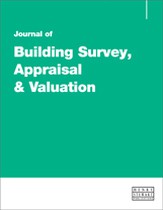The importance of occupancy patterns on the analysis of heating energy relating to housing refurbishment
Abstract
Attempts to reduce household energy consumption for space heating are showing little progress. This paper explores the role of thermal mass in refurbishing an existing dwelling to reduce heating energy consumption. The investigation is based on three refurbishment strategies to achieve light, medium and heavy weight building structures in conjunction with a highly insulated and airtight structure (compatible with Code for Sustainable Homes Level 5). This was based on a typical Irish dwelling originally constructed using concrete hollow block, although the results could be extrapolated for the UK, which has a similar climate. HTB2 (a dynamic thermal energy calculation engine) was used to carry out thermal modelling of the refurbishment strategies in conjunction with more than 40 occupancy patterns. For average occupancy, the thermal mass had little impact on energy use; however, light weight fabric was slightly more efficient for lower or intermittent occupancy. The energy penalty of reheating dwellings left unoccupied and unheated for a full day was equivalent to 1.2–2 days’ heating energy. Increasing thermal mass reduces the likelihood of major overheating but does not mitigate it entirely. The remaining overheating hours, however, could be sufficiently addressed by increasing the ventilation to 1.5 Air Changes per Hour during overheating hours.
The full article is available to subscribers to the journal.
Citation
Stevenson, Vicki and Mcnaboe, Barry (2014, January 1). The importance of occupancy patterns on the analysis of heating energy relating to housing refurbishment. In the Journal of Building Survey, Appraisal & Valuation, Volume 2, Issue 4. https://doi.org/10.69554/QPDV6327.Publications LLP
